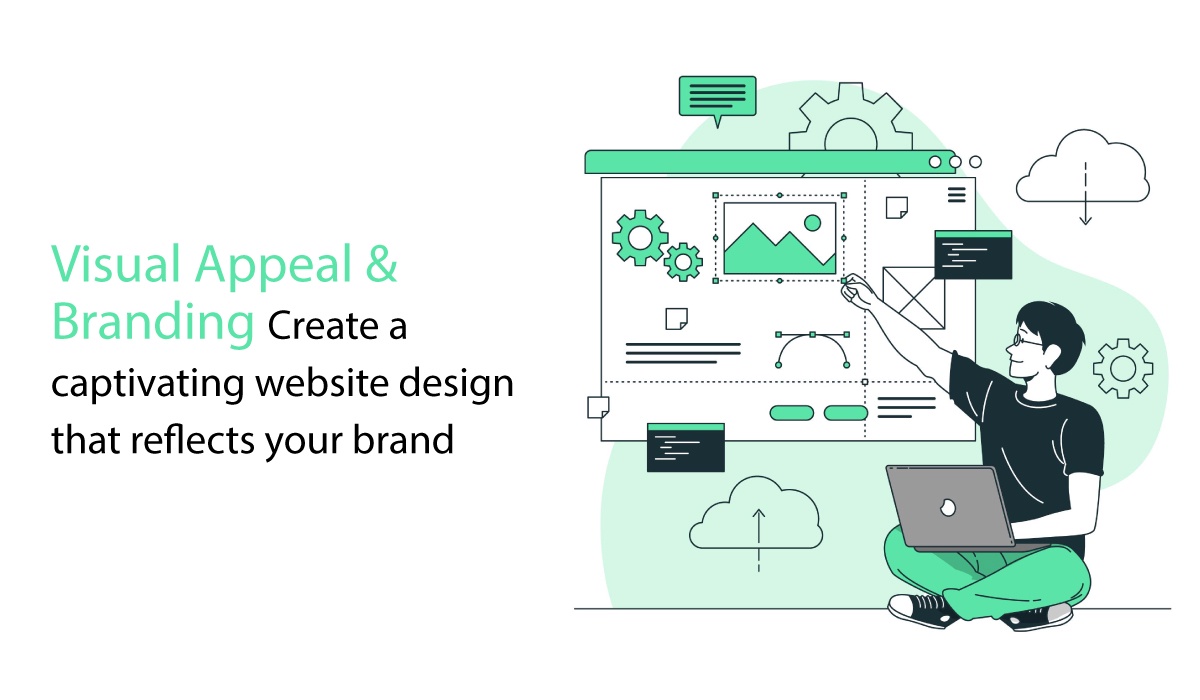In the fast-paced digital landscape, creating a captivating website design that reflects your brand has never been more crucial. A visually appealing website not only attracts visitors but also leaves a lasting impression on their minds. Your website serves as the virtual storefront of your business, and the design is the key to making a powerful first impression. In this blog post, we'll explore the importance of visual appeal and branding in web design and uncover actionable tips to create a captivating design that aligns with your brand identity.
Why Does Visual Appeal Matter?
Visual appeal plays a fundamental role in shaping users' perceptions of your brand. Within seconds of landing on your website, visitors form an opinion about your business based on its appearance. A visually stunning website instills confidence, professionalism, and trust in your audience. On the other hand, a poorly designed site may raise doubts about the credibility of your brand, leading potential customers to navigate away.
Additionally, in the age of social media, visual content is more important than ever. People are drawn to visually engaging content, and eye-catching graphics can significantly increase the shareability of your website's content across various platforms, amplifying your brand's reach.
Understanding Branding in Web Design
Before diving into the design process, it's crucial to understand what branding means in the context of web design. Branding goes beyond just a logo or color scheme; it encompasses the essence of your business, its values, personality, and how you want your audience to perceive you. Your website's design should embody these elements cohesively to create a memorable and consistent brand experience.
1. Define Your Brand Identity
Start by defining your brand identity. What is your company's mission and values? Who is your target audience? What sets you apart from competitors? These questions will help you establish a clear direction for your website's design. Your design choices should reflect the answers to these questions, ensuring that your website speaks directly to your intended audience.
2. Consistency is Key
Consistency is crucial in branding. Your website's design elements, such as color palette, typography, and imagery, should remain consistent across all pages. Consistency fosters familiarity, making it easier for visitors to recognize and remember your brand. Ensure that your logo is prominently displayed, and its colors are used throughout the website to reinforce brand recognition.
3. Create a User-Centric Design
While aesthetics are essential, user experience (UX) is equally vital. A user-centric design prioritizes the needs and preferences of your audience. Conduct research to understand what your target users expect from your website and how they navigate through it. This insight will help you craft a design that guides visitors smoothly from one section to another, leading them to take desired actions, opined a top website design agency in Bangalore - Webomindapps.
4. Use High-Quality Visuals
Visuals are the heart of your website's visual appeal. Invest in high-quality images and graphics that align with your brand's style and message. Avoid using generic stock photos that lack authenticity. Instead, consider using original photography and custom illustrations that showcase your products, services, or team. Well-crafted visuals can create an emotional connection with your audience, making them more likely to engage with your brand.
5. Pay Attention to Typography
Typography plays a significant role in web design. Choose fonts that complement your brand's personality and are easy to read. Consistency in font usage is crucial to maintain a unified look throughout the website. Consider using different font weights and styles to add variety while keeping the overall design cohesive.
6. Balance and White Space
A cluttered website can overwhelm visitors and distract them from your core message. Achieving a balanced layout with adequate white space enhances readability and draws attention to essential elements. White space, or negative space, gives your design room to breathe and allows users to focus on the content without feeling overwhelmed.
7. Mobile Responsiveness
With the increasing use of mobile devices, ensuring your website is mobile-responsive is a non-negotiable aspect of web design. Your brand's visual appeal should translate seamlessly to different screen sizes, providing users with an optimal experience, regardless of the device they use to access your site.
8. Incorporate Brand Storytelling
Branding goes beyond visuals; it also involves storytelling. Use your website to tell your brand's story in a compelling way. Incorporate content that communicates your brand's history, values, and the journey that led to its establishment. Storytelling creates an emotional connection with your audience, fostering a sense of trust and loyalty.
9. A/B Testing and Iterative Improvements
The design process doesn't end once your website is live. Use A/B testing to experiment with different design elements and layouts to identify what resonates best with your audience. Continuously gather feedback and analyze user behavior to make iterative improvements and keep your website's design fresh and engaging.
10. Regularly Update Your Design
As your brand evolves, so should your website design. Regularly update your visuals and content to reflect any changes in your brand identity or offerings. A website that remains stagnant can give the impression of an inactive or outdated brand.
Conclusion
In conclusion, a captivating website design that reflects your brand is essential for establishing a strong online presence. Visual appeal and branding go hand in hand, and when executed effectively, they can create a lasting impact on your audience. By defining your brand identity, ensuring consistency, and focusing on user-centric design, you can craft a website that leaves a memorable impression and builds a loyal customer base. Remember that web design is an ongoing process, and staying attentive to your audience's needs and preferences will lead to continuous improvement and success for your brand online.


No comments yet